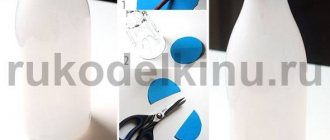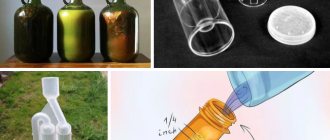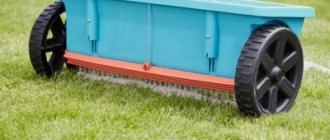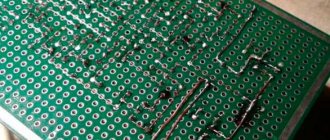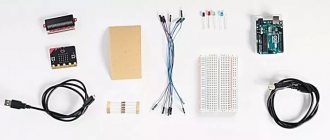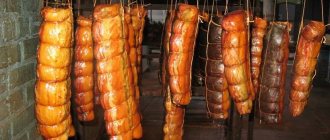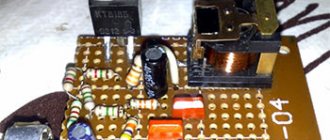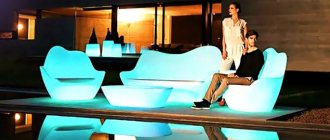It is not pleasant that cold air penetrates into a warm room, cooling it, because in this case it turns out that the street is heated. Not only does this create uncomfortable conditions, but it also has a noticeable impact on your health and wallet. This problem can be overcome with the help of a thermal curtain, which is a reliable barrier between indoor and outdoor air.
They differ in the heat source, that is, such equipment can be electric or water. A water thermal curtain is economical to use, since the heating element is hot water. However, this type of device, like the other, has excellent advantages, due to which it is becoming increasingly popular:
- Protecting the building from heat loss.
- Protection from cold air, which, thanks to the curtain, cannot penetrate into the room.
- Creating a barrier that prevents exhaust gases, dust and insects from entering from the street.
- Leveling the temperature gradient.
- Protection from drafts, which has a positive effect on health.
- Additional heating of the room.
- Ability to keep the door open.
- The ability to create coolness in hot weather.
- Cost-effectiveness due to both less heat loss and the fact that the energy source is not electricity, but water.
Operating principle and installation
The principle of operation is quite simple: a powerful fan creates a high-speed air flow, which forms an “invisible barrier”; thanks to such a system, warm air cannot leave the room, and cold air cannot enter it. The heat source of the water curtain is hot water.
It turns out that for the water type of device to work, central heating is needed.
Installing such equipment, of course, is difficult, but this cannot be compared with the fact that the operating costs are low and the power is very high. The scope of application of water curtains mostly extends to industrial buildings that have large open openings. The device is indispensable in restaurants, shops and warehouses, that is, those in places where doors open very often due to a large flow of people.
Installation is usually done above the door. Installation above the opening means that the curtain is horizontal, and on the side of the opening it is vertical. It must be remembered that the vertical curtain must be at least ¾ of the height of the opening that needs to be protected. This is the only difference between this type of device and the horizontal one.
Making a potbelly stove
Long-burning potbelly stoves are good because they are made from any available materials - these are various barrels, old capacious cans, pieces of large-diameter pipes or simply sheet metal. We chose sheet steel as the starting material - it is a more convenient material to process. You can adapt a barrel for this, but doing work in its internal volume is not very convenient.
All sizes are presented rather as guidelines, a kind of averaged best option. You, in turn, can deviate from the dimensions of the parts to create a stove that satisfies your specific wishes.
The design of a long-burning furnace is quite clear from the drawing presented above. Here are its main components:
- Combustion chamber - wood burns in it with the formation of pyrolysis gas;
- Afterburner – combustion of pyrolysis products occurs in it;
- Doors of the combustion chamber and ash pan - they are purchased in the store, but you can make them yourself;
- Chimney - in most cases it is a pipe with a diameter of 100-150 mm.
You can deviate from the drawing in one direction or another. But remember that as the size decreases, the burning time decreases and the power of the long-burning stove decreases.
The lower the power, the smaller the heated area. Therefore, it is best to provide a small reserve.
To make a long-burning stove like a potbelly stove, we need sheet steel with a thickness of at least 3 mm - this will ensure a long service life of the heating equipment. If the steel is thin, it will begin to burn through - after a couple of seasons, holes will form in it
Therefore, special attention is paid to the thickness of the steel. The optimal thickness is 3-5 mm
For our example, we will take the classic scheme of a potbelly stove, modify it and get at our disposal an effective wood-burning stove for a home. At the initial stage, we prepare the side sheets - in our drawing they have dimensions of 450x450 mm. Next, we make the lower walls, front and rear walls - their dimensions are 200x450 mm. As a result, we should get a rectangular box. But don’t rush to weld it together - there is a lot of work ahead.
First you need to make a base - this is the bottom wall and two side ones. We weld them together, weld the grate at a height of 80 mm from the bottom. Now we need to prepare the front wall of the long-term heating oven - we weld both doors into it, and then weld it to our structure.
We prepare two metal sheets measuring 200x370 mm. We weld the first of them to the front and side walls at a height of 160 mm from the top. Next, we prepare the back wall - we weld small metal tubes into it, which should fit into the space between the two inner sheets that form the afterburning chamber - secondary air will be supplied through them. Then we weld the back wall and a second metal sheet at a height of 80 from the top (welded to the side and rear walls).
The damper is used to regulate air flow. It is this that improves the efficiency and quality of traction.
Our DIY long-burning stove is almost ready - all that remains is to figure out the top cover. We make a hole in it with a diameter of 100 mm and weld a piece of pipe for the future chimney. Now it remains to find out whether you need a hob or not - it is also welded into the top cover. At the last stage, we install the lid in place and weld it - the stove is ready, now it can be installed on a non-combustible base, attached to the chimney and started.
When starting the long-burning stove presented above, let it burn, then cover the ash pit so that the wood barely smolders and the generation of pyrolysis gas begins.
Another interesting long-burning pyrolysis furnace is shown in the following figure. It is made from a barrel or a piece of large diameter pipe and is equipped with a suitable lid. In the lower part, at a distance of 80-100 mm from the bottom, a metal disk with a hole in the middle is welded. A door is welded between the disk and the bottom, on the side wall. The resulting space forms our firebox. We weld a chimney with a diameter of 70-100 mm in the upper part.
In terms of low cost of use, such a stove is a real gift, since there is no shortage of sawdust in a private home.
The resulting long-burning furnace receives heat by burning pyrolysis gases generated when heating sawdust. The sawdust itself is poured into the main volume, and to prevent it from spilling into the firebox, it is compacted using a wooden cone. When the stove starts, a fire is lit in the firebox, the cone is removed - after a while the unit will begin to produce heat.
Main element
The main design element is a radial fan, which is necessary to create the necessary air flow. Such a turbine must be single and located along the entire length of the device. It helps create an even flow. The engine is mounted on the side of it.
However, manufacturers often decide to place the engine in the center, with small turbines on its sides. The reason for this arrangement of elements is the difficulty of manufacturing a turbine with a length exceeding 800 mm. How effective is this installation method? Of course, such a simplified curtain will cost less, but there will be a “dip” in the central part of the air flow, which significantly reduces the protective properties. In addition, the heating elements will be blown unevenly, and this leads to their earlier failure.
Modernization of an existing fan
Plastic bottles will come in handy when upgrading a store-bought fan. Almost free available tools will help to significantly increase the performance of the device.
Let's look at how and by what method you can create a pleasant sea breeze in your apartment:
We made parts designed to enhance airflow. They will provide accelerated cooling of the space around.
Now you need to make the basis for fixing them:
After preparing the device designed to enhance the fan’s performance, we proceed to assembly and commissioning:
How is the water curtain controlled?
The water thermal curtain is accompanied by at least two switches, one of which must turn on the fan, and the other must turn on the heating elements. Heating power regulators that have two or three stages can also be installed. Fans can be two-speed. The air curtain may have a thermostat that turns off the device or heating elements when the set temperature is reached.
There is a built-in and wired control panel, it all depends on the chosen model. However, the built-in type is used on small-sized curtains that are installed for windows and doors. This is explained by the fact that the ability to reach the buttons depends on the distance. Accordingly, for water curtains it is more rational to use remote controls that can be installed in the right place.
Sometimes a limit switch is used, which is convenient because it turns on the device only when the gate is open. It turns out that the switch starts working when the doors or gates are opened. Its use is very convenient in warehouses and hangars.
Fan Heater Assembly Instructions
Having understood the principles of the design of a fan heater and the features of choosing the appropriate type of heating element, you can create a device from the materials at hand and give it a suitable configuration.
Option #1 – fan heater made of asbestos cement pipe
A piece of asbestos cement pipe is an excellent option for creating a fan heater. This material does not conduct current, which will make the device safer. A pipe with a diameter of about 15 cm and a wall thickness of 10 cm is suitable. The length of the body should be approximately half a meter.
One of the options for constructing a fan heater based on an asbestos pipe will be shown in the photo selection:
To make cutting asbestos cement easier, it is recommended to pre-wet the area where the cut will be made for two hours. You can cut with a regular hacksaw, but a grinder with a diamond attachment is better.
Curtain selection
The following factors influence the choice of air curtain:
- Device length.
- Power.
- Performance.
- Type of instalation.
- Control method.
We have already discussed the last two factors, now we will talk about the other three.
- Performance. The air flow speed and installation height depend on it. For example, let's take a doorway whose width is about one meter and height is about two meters. In this case, the “pumping” of the curtain should be from 700 to 900 cubic meters per hour. With this performance, the air flow speed will be about 8 meters per second at the outlet of the device, and about 2 meters per second at floor level. Of course, the price of such devices is not small, so devices with lower performance are used to protect small openings. Since water curtains are used more for industrial buildings, you cannot save on this factor, otherwise the efficiency will be minimal.
- Power is also an important factor, given that the equipment can heat the air in the room, although this factor is not at all necessary. For example, let's take a building of 10 square meters, which is not heated, and the ceiling height is about three meters. The power required under such conditions is 1 kW. However, in this case, the building must be permanent, that is, the ceiling and walls must have good thermal insulation. You should not choose a device with high power for well-heated places or even a device without a heating function. It is worth mentioning the peculiarity of the heating function: the air coming out of the curtain will never be hot, even if the power is maximum, it will only be warm. There is an explanation for this: the heating elements have a high blowing speed.
- Length. It can range from 600 to 2000 millimeters. Lengths from 800 to 1000 millimeters are very popular; such devices are installed above a standard opening, so they are not suitable for industrial facilities where water curtains are often used. How to correctly calculate the length in this case? It should be the same as the width of the opening or slightly larger. This is important to ensure that the air flow completely covers the opening and prevents cold air from entering the room.
All this information will help you choose the right water curtain, as it plays an important role in creating comfortable conditions. The installation of such equipment will indicate that caring for people is an integral part of any organization.
How does a water curtain sprayer work?
The task of any paint booth is to ensure that the air in the spray zone is cleared of paint mist and solvent vapors.
Water spray booths have several levels of air purification from paint.
Level 1
- frontal water curtain
- this is the visible part of the spray booth with a water curtain. A stream of water flows down it in a continuous and continuous stream. It must be uniform and completely cover the entire front area (surface) of the curtain.
Level 2
-
internal air purification
- perhaps the main filtration and purification of air from paint waste is carried out here. Depending on the design of the spray booth and the manufacturer, there are various internal air purification systems.
Level 3
—
dry filtration
— carries out final air purification from remaining paint particles and protects the fan blades from paint sticking. Depending on the manufacturer, dry filtration is carried out in Italian paint booths with a water curtain, in Russian paint booths - in others, such as China, there is no filtration at all.
Below are diagrams of the structure of Italian and Russian paint booths:
1) Scheme of a water spray booth ZINCOVELO ZA Italy
2) Video of the work of a spray booth Italy
3) Scheme of a water spray booth made in Russia
4)
Video of the Russia paint booth in operation (built into a clean room, overpressure chamber)
2
The operating principle of a spray booth with a water curtain is as follows.
When spraying the material, a paint mist is formed. The fan, which is installed on the roof of the spray booth, creates a vacuum and draws contaminated air through the opening in the paint booth at the bottom of the front curtain.
Also, particles of paint and dust are deposited on the front front surface, which are captured and carried away in a continuous stream into the bathtub of the paint booth and settle in the water.
Contaminated air, which entered the internal cavity of the painting water chamber with the air flow, is subject to additional cleaning. In Italian painting booths there are several water cascades, in Russian painting booths there is filtration by an irrigation system. The air is purified from spray waste.
Final cleaning - dry filtration installed in front of the fans (or)
Water spray booths can be of various modifications: with a floor, with side walls, without a floor and without walls. The choice of model depends on the painting technology and the product, as well as the requirements for the quality of the coating.
Painting booths perform the function of air extraction and purification.
When creating a painting area, it is very important to ensure the correct microclimate in the spraying area (the desired temperature regime), and also the incoming air must be cleaned of dust and dirt, this allows you to achieve excellent conditions for obtaining high quality coatings.
Spray booth with water curtain mod. W3000 is designed for:
- significant improvement in the quality of paint and varnish coatings;
- significant reduction in maintenance time for painting areas;
- increasing the productivity of painting areas;
- ensuring acceptable sanitary and hygienic working conditions for painters and support staff;
- immediate removal of solvent vapors from the work area in order to prevent the formation of explosive concentrations;
- significantly reducing emissions of paint and varnish sludge into the environment;
- reducing the fire hazard of the paint job.
Areas of use
The W3000 water curtain spray booth is successfully used for painting metal, glass, wood, plastic and products made from them.
The range of painted products is very wide:
- painting wheel rims
- painting of large metal structures
- painting of garden and agricultural equipment
- painting drills
- painting pipes and poles
- painting piles
- painting welded air ducts
- painting formwork
- painting elements of building structures
- painting cement-fiber boards and other building and finishing materials
- painting (varnishing) of electronic boards and components
- painting aircraft parts
- painting elements of boats and boats
- car bumper painting
- restoration of furniture and antiques
- painting furniture
- painting MDF facades
- painting tables
- painting chairs
- window painting
- painting doors
- painting molded products (door moldings, skirting boards)
- painting parquet and floor boards
- painting of other furniture and joinery products
Principle of operation
Some of the paint and varnish material sprayed by the painter does not fall on the product. At the same time, fine dust from the quick-drying components of the varnish is formed in the air - dust, which, thanks to the painting booth, is removed from the working area by an air flow parallel to the floor.
A significant part of the varnish dust is deposited on the water curtain (up to 85%).
Additional filtration systems (optional) - a labyrinth of barrier panels that repeatedly change the direction of air flow, as well as quick-release cassettes with an inexpensive replaceable element - a fiberglass filter - allow achieving a degree of purification from solid particles of up to 99%.
A “side effect” of using water in the filtration system is the absorption of solvents when the chamber begins to operate. After the water is saturated with solvent molecules, the absorption of “odors” stops, and the illusion of their filtration disappears.
Basic equipment
- Prefabricated body and settling tank made of galvanized steel with a large number of longitudinal, transverse and vertical stiffeners.
Provides durability and reduced vibration during operation.
Double cascade of water curtains.
The front curtains of both cascades (those through which water flows) have a quick-release design. Thanks to this, not only is full access to the interior of the chamber for maintenance provided, but it also makes it technically possible to narrow the gap between the lower edge of the curtain and the water in the bathtub located below. For the upper cascade, this is the bath of the lower cascade, and for the lower cascade, this is the settling bath.
This design has a number of advantages, the main ones being:
- due to the absence of long sections of free fall of water, the formation of splashes in both the upper and lower parts of the working area is eliminated;
- water rushing off the lower edge of the water curtain creates a dense flow that additionally cleans the air of suspended particles, which eliminates the need to install water sprinklers;
- the speed of air flow after entering the painting booth is reduced by 4-5 times, which allows suspensions to settle into the settling bath, increasing the degree of purification of the emitted air.
- Attached bath to accommodate the pump>
The location of the bath is universal (to the left or to the right of the camera). In this way, the service side can be selected during installation.
The location of the service area outside the chamber allows for visual control of operation and avoids external contamination of the pump, which leads to its overheating and premature failure.
Valves located outside make it easy to regulate the water flow in the water curtains, as well as to quickly drain water from the chamber using a standard pump during its scheduled maintenance.
A stainless steel pump that pumps lumps of coating sludge with a diameter of up to 35 mm, as well as a built-in overheating protection system.
- A system of circulation water lines, including a water circulation valve, an automatic water drain valve, all necessary hoses, passage units, flanges, clamps and other installation materials
- Mounting kit including bolts, nuts, washers, sealant, etc. according to camera configuration
- Packaging for transportation by road
- Passport and instruction manual
- CD with diagram and photo illustrations of the assembly
Additional options
- Explosion-proof exhaust fan.
- The supply fan and set of filters for the “economy project” include:
- Supply fan of general industrial design. To create excess pressure in the paint sprayer, the capacity of the supply fan is selected to be 10-20% greater than the exhaust fan, taking into account the fact that the resistance of both the pocket filter and the filter of the air distribution device must additionally be overcome.
- A roll of fine filter (20x2 meters) for the buyer to independently sew an air distribution hose.
Explosion-proof design, with an explosion-proof motor (optional - with a general industrial motor or not explosion-proof).
1a
— Fan with a wafer-type supporting body. Thanks to the installation of additional amplifiers through a rubber gasket directly on the roof of the chamber and the placement of additional amplifiers in the fan installation area, vibration resulting from clogging of the fan blades during intensive operation of the spray booth is minimized.
The fan motor together with the impeller is completely removed from the housing. To do this, you do not need to caulk the air ducts, disconnect the electric motor from the electrical network, etc. This fan design minimizes maintenance time.
1b
— Fan with supporting frame. The fan can be installed in any convenient place, incl. outdoors, and is connected to the chamber by an air duct (the air duct is excluded from the supply).
The design provides the ability to remove the motor together with the impeller from the fan housing without caulking the air ducts. This ensures ease of maintenance and minimizes technological downtime of the painting chamber.
Additional air filtration devices
The combined use of devices allows achieving a degree of solid particle removal of up to 99%.
2a
— A labyrinth of barrier panels that repeatedly change the direction of air flow. At the same time they serve as additional diagonal stiffeners. Recommended for installation when placing the fan on the roof of the chamber.
2b
— Quick-release filter cassettes with an inexpensive replaceable element – a fiberglass filter.
Electrical control panel
3a
— Shield in a plastic case with automatic switches - for placement outside the hazardous area
3b
— A shield in a metal case with on/off/emergency shutdown buttons – for placement outside the hazardous area.
Explosion-proof fluorescent two-lamp lamp, 2x36W. The lamp is supplied with 2 lamps.
Increasing the depth of the working area by 500 mm
Set of two side panels and a roof panel.
Water floor
The water floor bath is integral with the settling bath of the paint booth and has a height of 300 mm from the workshop floor level. Thus, no gangways are required, making it easier for the operator to move around. The large volume of water filling the bath allows you to increase the interval for cleaning paint materials from accumulated sludge, reducing process downtime. Galvanized gratings covering the water floor can withstand a footprint load of at least 200 kg and 450 kg/m2.
A pocket filter in its own housing, designed for connection with the supply fan. The filter design is quick-release. The filter is designed for repeated use. Its regeneration is carried out manually, mechanical cleaning and blowing.
Or furniture is a rather complex and responsible process, which is most often entrusted to specialists who have equipped cameras. However, it is quite possible to make such a device yourself, and you will not only save money, but also organize your own business. Before starting work, you need to familiarize yourself with the requirements that are important to comply with to achieve the best effect.
Homemade #—based on the “Good Warmth” heater
Many heating devices operate according to the so-called “thermal film principle.” For example, the well-known “Kind Warmth”. Assembling its analogue at home will not be difficult. For this you will need:
- Laminated paper plastic. Two sheets of equal size with an area of about 1 square. m.
- Graphite powder. You can grind graphite yourself, for example, old graphite trolleybus brushes.
- Epoxy adhesive.
- A piece of good wire with a plug at the end.
Heater Good Warmth - a prototype for many homemade devices.
The work is carried out in stages:
- Mix the glue with graphite powder and stir the resulting mixture thoroughly. Thus, we get not just an adhesive composition, but a graphite conductor with high resistance. The amount of graphite in the glue directly affects the maximum temperature of the future heater. On average it is about 65 °C.
- Apply the prepared composition onto a sheet of plastic using zigzag wide strokes. For processing we use the rougher side of the sheet.
- We connect the plastic sheets together using epoxy glue.
- For greater structural strength, we construct a wooden frame that securely fixes the sheets.
- We attach copper terminals to the graphite conductors on different sides of the structure. As an option, you can also connect a simple thermostat, which will allow you to set the most comfortable heating mode. However, this is not necessary.
- Dry the structure thoroughly. Even slight humidity will damage the homemade heater the first time you try to turn it on.
- We carry out tests and measure the resistance of the device. Based on the obtained value, we calculate the power and determine whether the heater can be safely connected to the network.
The device is ready for use. It can be placed on the floor or on the wall, does not take up much space, is quite effective and safe, provided it is well insulated.
Graphite is crushed and mixed with epoxy glue to create a graphite conductor.
Diagram of the future heating device
Preparatory work
Paint booths are made using a list of specific tools as well as materials. Among other things, it is important to find the room in which the equipment will be located. It could be a garage. Stock up on a heat fan, ventilation system and a heat gun. This list is mandatory. When expanding the list, you can add doors, fans, gates, lamps, control panels, etc. Everything will depend on desire and financial capabilities. The camera must be automated and have the ability to not only paint a car or other products, but also dry them. The functional components are supply ventilation, which is equipped with multi-level filters for cleaning. This should include a chamber for painting and further drying, a heat pump, a ventilation unit and automation. Ventilation equipment must operate on the exhaust principle and have an air filter.
Directional heat gun
Our own heat gun has enough power to easily heat a garage, utility room or office in the house
For assembly you will need:
- a piece of plywood 16 mm thick;
- fan (duct);
- temperature and speed controllers;
- PBEC heating element (2.2 kW);
- fasteners (clamp, bracket, studs, nuts, washers);
- wheels.
We cut out a rectangle of approximately 47 cm x 67 cm from plywood, sand the rough edges and corners.
The plywood base was not chosen in vain: it is light, flat, and most importantly, it does not conduct electric current, which is important in the event of force majeure circumstances
We connect two central parts with a coupling - the fan and the heating element. We fix the resulting structure on a plywood base using a bracket and a plumbing clamp.
We select fasteners in such a way that they firmly fix the elements of the device and do not cause them harm. For example, self-tapping screws are perfect - they do not destroy plywood
Self-tapping screws (16 mm) are suitable for fastening. We install a temperature sensor (for example, TG-K 330), which is necessary to control the temperature, next to it there are two more devices - for adjusting the speed and temperature.
When connecting the parts of the fan heater to each other, do not forget about the safety of the device: the connection points of wires and cables must be insulated
Pulsar 3.6 is suitable as a thermal regulator. After installing all the necessary devices and parts, we connect them according to the diagram.
Device control circuits can be found in specialized literature, instructions for devices such as an electric fan, or on specialized websites
For ease of use, we screw wheels to the plywood base.
Small rollers screwed on the bottom side make the homemade fan heater more convenient to move around the room, especially if it is heavy.
Well, that’s all - the homemade heat gun is ready.
Try to place the device parts in such a way that, if necessary, it is easy to disassemble each of them and replace failed elements
Like any homemade fan heater, this device has disadvantages. For example, when the device is stopped, the voltage on the heating element remains, and this is quite dangerous, since overheating occurs and an emergency situation is possible. The situation can be corrected by installing a relay to timely turn off the power supply to the temperature controller. Another disadvantage is inadequate heating of the room, but this is a disadvantage of almost all stationary fan heaters.
Preparing the premises
Paint booths are manufactured taking into account the requirements for the premises. The walls must be fireproof, washable and as airtight as possible. There should not be any particular difficulties with the above points. Walls are most often made of steel and are well insulated. The two layers that will form the basis of the system must be filled with heat-saving safe materials. The floor also needs to be done taking into account certain rules, among them it is worth highlighting the design of this part of the room using several layers of lattice covering, which will ensure air removal. should form the basis of emergency and entrance doors that protect the car from dust and other contaminants coming from the street. This is why tightness is so important. The door should open easily, which will ensure the safety of the master.
Additional functions
More expensive fan heater models have a number of additional functions:
- Splash-proof housing. It allows the device to be used in rooms with high humidity, for example, in the bathroom;
- Timer. This is convenient, because the device automatically turns off at the specified time;
- “Temperature maintenance” function, which allows you to maintain the desired microclimate in the room;
- Function “protection against overheating” and turning off the device when tipping over;
- Convenient display and touch control;
- Built-in humidifier. A special water container is provided for this purpose.
It is important that the device has a thermal relay that turns off the device if it overheats. But even this option does not eliminate the need to constantly monitor the fan heater so that it is not accidentally covered
Of course, in this case the system will work, but the possibility of ignition of flammable materials cannot be ruled out. This is especially true for models with a spiral. Well, don’t forget about the rule that the minimum distance from the heater to any other object should be more than 50 centimeters.
Let's say a few words about the design. Fan heaters are not only a source of heat, but in many cases they are also a stylish device. Manufacturers produce heaters in all sorts of colors, which delight the eye with smooth lines and a variety of shapes.
Arrangement of the lighting system
Paint booths are manufactured taking into account the arrangement of suitable. Using fluorescent lamps, you can ensure the best visibility and the absence of glare, as well as unnecessary shadows. According to technological rules, illumination should be from 600 to 1000 lux. The most successful and effective option is to use fluorescent lamps, which are located on the side walls and under the ceiling. However, this approach involves some disadvantages; during painting, the master will not have visibility of the lower part of the car or product. In order to eliminate unnecessary glare and insufficient light, you need to place large oblong lamps along the wall. Paint booths are manufactured based on the requirements of free space, which will guarantee ease of use. You should not choose a room whose area is less than 4 x 6 meters. It is recommended to install the camera on a concrete base, but it is worth considering that this approach is very expensive. You can resort to an alternative solution, which involves using a metal frame as a base. It is necessary to place a valve, an exhaust system and a filter under the floor.
How to make BKP with your own hands
The only secret of such a stove is the sealed firebox door. It can be of any shape, but, as a rule, it is made round or square.
1. From a pipe with a diameter of 200–350 mm (wall 2–4 mm), cut a ring 50–100 mm wide. Align and clean the edges. This element is called a “collar”.
2. From a sheet of 3–4 mm, cut out a circle exactly along the outer diameter of the collar. This will be the door.
3. Based on the dimensions of the furnace, we select the diameter of the air supply channel (air channel - VK). We can conditionally divide household-use BCPs into 2 categories - small (0.13–0.18 cubic meters) and medium (0.18–0.25 cubic meters). For small ones, a diameter of 76 mm will be enough, for medium ones - 102 mm. The size of rectangular channels is calculated through the cross-sectional area S = Pr 2.
4. The VC must have an adjusting valve or gate.
- We cut out a round damper (metal 2–3 mm) that blocks the stroke of the VK with an eye for the diameter of the bolt thread (M10–12). We weld a rod (handle) to it opposite the eyelet.
- We weld a nut to the VK pipe parallel to the air flow, flush with the outer edge.
- We install the damper on the VK pipe on the bolt through the spring and secure it with a lock nut.
The manufacturing process of the damper is more complex, but in terms of convenience and effect it has no advantages over the above-mentioned damper. It can be copied from a factory copy.
5. Cut a hole in the door for the VK.
Attention! The door opening should not be smaller than the diameter of the VC. The channel itself should be shifted down from the center and its lower edge should be located 20–30 mm from the door cuff.
6. From a strip 2–3 mm thick and 20–30 mm wide, take a segment equal to the circumference of the door.
Ventilation system design
The spray booth must have a high-quality ventilation system, as it is one of the key factors. The system must be equipped with a filter, which will ensure air purification, eliminating the deposition of paint mist. Single-engine and dual-engine units are available for sale. The first type blows air from above, as a result the fog settles down and is discharged through a special hole. Two motors provide air injection and exhaustion. When a spray booth is made, it can also be equipped with an air filter. It is best to choose a two-phase variety; this model will be able to capture large contaminants and will also get rid of small particles. It is important to choose ventilation systems whose air flow speed is equal to the limit of 20 to 25 cm per second.
Popular models
Water fan heaters are made by many manufacturers. of the company Teplomash , which has developed a line of KEV models with a thermal power of 3 - 120 kW, are in greatest demand among Russian consumers
by Volcano , are in no less demand on the Russian market .
They manufacture various equipment for heating rooms , including water fan heaters. The company supplies several series of fan heaters to Russia with different thermal outputs.
If we compare the models of water fan heaters from these companies, choosing those that are similar in thermal power, we get the following results (see Table 1.)
Table 1. Technical characteristics of water fan heaters
| Water fan heater model | Teplomash KEV 25T3 W2 | Volcano V25 |
| Power | 3.1-7.6 kW | 3-20 kW |
| Installation in premises of: | 31-76 m2 | 80-200 m2 |
| Air flow | 600-1200 m3/h | 4000 3/h |
| Installation | wall | wall |
| Remote control | There is | There is |
Choosing a dryer for a spray booth
If the drawings of which are presented in the article will be made, then it is important to provide it with drying. Heat generators that can be found on the modern market operate on waste oil, gas and fuel. Depending on the needs of the camera, you can choose a generator of different power; it can be equipped with an automatic timer and other functionality. They are most often used for drying painted cars and products. They are easy to use and provide the desired effect at a significant financial cost.
Advantages
The undoubted advantage of electric walk-behind tractors is their compactness. The unit is easy to store and does not take up much space. This point is no less important during transportation. Most models can be transported in the trunk of a car by first removing the handles.
Electric models are much easier to drive than gasoline or diesel cars. At the same time, as already noted, the units do not pollute the air and do not make noise. The price of most models is significantly lower than the cost of cars with an internal combustion engine or a diesel component. The payback of the unit should also be taken into account. An electric walk-behind tractor is cheaper to operate, does not require fuel and constant complex maintenance.
If the site is small (within 10 acres) and at the same time electrified, the choice seems obvious. It is worth purchasing an electric walk-behind tractor. In most cases, such a unit will satisfy the needs of the summer resident. And if it is planned to build greenhouses on the site (or they are already present), then such a machine will be simply irreplaceable.
Dyeing equipment
If you are making a spray booth, the instructions presented in the article can be used by you to carry out this work. It is important to prepare your dyeing equipment. Spray guns that can operate at high and low pressure are suitable. The first type requires the use of a compressor that pumps air, creating pressure for painting.
As for low-pressure pneumatic devices, they operate on compressed air. On sale you can find both pneumatic and electric. Expensive equipment is a combination machine that combines the first and second types of devices. Such systems combine the best characteristics of airless and air methods. The spray booth, a photo of which is presented in the article, can be equipped with one or several of the above devices. Experts recommend using airless equipment, as it is the most optimal and efficient. At the same time, particles of varnish and paint will be sprayed from the gun under impressive pressure.
First stage
Before you build a paint booth with your own hands, you should imagine what it will look like and prepare everything you need. Draw a project on paper that shows the future paint booth along with all its components to scale:
- premises;
- heat generator;
- heat gun;
- ventilation system.
These are the main points, each of which includes many smaller elements - doors, thermal insulation, lighting system, etc.
Spray booth room
Let's talk about the premises
Before you make a paint booth with your own hands, you look for a suitable room. This could be a metal garage or a large workshop - the main thing is that you have the space and the ability to equip everything accordingly.
A car painting booth must have walls that meet a number of requirements:
- fire resistance;
- tightness;
- possibility of periodic washing;
- presence of thermal insulation.
The last point is especially important if we are talking about a garage with steel walls - you will have to make them double and put a layer of basalt wool or other fire-resistant heat-insulating material.
The room must be sealed
Be sure to pay attention to the floor - it should allow air flow to circulate freely. For this purpose, make a covering in the form of a multilayer lattice - this way, normal air outlet and flow will be ensured from below.
Two doors are a mandatory fire safety requirement. They must be easy to open to allow immediate evacuation in the event of a fire, and sealed to prevent dust and foreign particles from entering the room.
The dimensions of the chamber must be sufficient so that the master does not have any obstacles to free movement during his work. A concrete or metal frame can be chosen as the base. An exhaust mechanism with filters and valves is installed under the floor surface. Consider the need for walkways to move around.
Paint booth with water curtain on doors
Fuel filter heater for diesel engine separator configuration
It is important to know
To manufacture a fuel filter heater for a separator configuration of a diesel engine, you will need a lathe.
Before installation, it should also be taken into account that the drain unit in diesel engines is used to remove liquid from the sump. Accordingly, if this device is to be removed, it is necessary to use only proven high-quality fuel.
What will you need?
Tools and materials required for installation:
- set of wrenches;
- a piece of metal pipe for making a bushing;
- wires for connection;
- a lathe that will be used to cut threads.
Algorithm of actions
You can install a diesel fuel filter heater of a separator configuration as follows:
- A metal sleeve of the required size is made. The outer circuit of the device must match the drain valve of the system.
- Using a drill, drill a central hole.
- Internal and external threads are cut. The outer pitch should correspond to the drain element, and the inner pitch should correspond to the thread for the glow plugs.
- The completed structure is assembled from candles. The resulting mechanism is screwed into the body of the separator device. The shape of the part itself needs to be corrected - a pin should be made on the hexagon. To do this, a screw or bolt is welded on the side.
- After installation, the wiring is laid. On the positive line you need to install a switch button and a four-pin relay. The entire electrical circuit must be protected by a safety device to prevent voltage surges and short circuits.
- After installation, it remains to connect two terminals. Grounding or “ground” goes to the bushing, and the positive contact must be connected to the glow plug. The installed device is being tested.
Video: features of the use of fuel heaters
Roman Romanov in his video spoke about the nuances of using heating devices for fuel filters of separator design.
Lighting is important
In the process of painting cars with your own hands, one of the very important roles is played by room lighting. It needs to be bright enough, comfortable for the eyes, and not produce shadows or glare.
Practice shows that the most convenient option will be fluorescent fluorescent lamps - they are placed on the ceiling. To ensure sufficient visibility of the lower part of the machine, several oblong lighting sources are hung along the walls.
Fluorescent fluorescent lamps
An equally effective solution to the lighting problem will be lamps running on LEDs. This type of lighting is becoming increasingly popular due to a number of advantages that LEDs have over other options:
- bright high-quality lighting;
- minimal energy consumption;
- low operating temperature;
- reliability;
- durability
Today you can easily install LED lighting in a room - it will cost a little more, but the result is worth it.
Without providing high-quality lighting, you will not be able to fully control the painting process, which will negatively affect the final result of the work.
Proper lighting in the spray booth
The use of homemade fan heaters
Electric models can heat small areas, while their water counterpart is used to heat large spaces, but you may need several devices to distribute the heat evenly.
Homemade devices can be used for drying things, which is important in winter, as well as car seats after washing a car or small rugs.
If, upon arrival at the dacha, you need to immediately heat one of its rooms, then fan heaters will cope with this task faster than other heating devices. It can also be used for heating basements and ground floors, those rooms where there is high humidity. Homemade devices can significantly reduce its level and maintain a stable temperature in the room for the required period of time.
We recommend reading other articles on the topic:
Room ventilation, air purification and drying
A do-it-yourself paint shop is built taking into account all the requirements of painting technology and safety. Properly arranged air ventilation plays a key role here. It is responsible for purifying the air, as well as ensuring that paint mist is properly deposited and removed.
Depending on what principle is used in the room ventilation system, two types of chambers are distinguished:
- with one motor;
- with two motors.
In the first case, air is supplied to the room from above, and the fog settles down - the necessary pressure is applied to it. Finally it is discharged through an individual channel arranged for this purpose. In the second case, one of the motors pumps air, the second sucks it out, removing it from the chamber.
Spray booth ventilation
The design will require high-performance ceiling air filters to eliminate the possibility of foreign particles entering the painting area. For this purpose, it is recommended to choose air filters that operate in a two-phase mode - in the first phase, large types of contaminants are removed, in the second - small ones. It is important to take into account that it is necessary to clean both incoming and outgoing air flows. Filters installed at the bottom clog faster and will have to be replaced much more often.
The installation of filters should provide for the possibility of turbulence in the air flow with enamel particles - to do this, you need to correctly position them around the perimeter of the room and take into account the air pressure.
After painting, the car will need to be dried - a special device is installed for this. For drying, a heat generator is used, which operates on an advantageous type of fuel. Some people use infrared heaters for this purpose. The main requirement for drying is a uniform supply of heat to avoid overheating.
Supply and exhaust ventilation in the painting booth
Stove for a summer residence with heating pipes:
Good afternoon, Alexander! Tell me, what is the effectiveness of this system? Is one pipe per room not enough?
- Alexander Zalutsky Posted on 08/13/2012 at 6:30 am
The customer promised to invite me in the winter, when he would come for the weekend. We will take measurements. During the test fire, we burned 2 kg of wood. 10 minutes after ignition, the temperature of the air leaving the pipes was 53 degrees.
Interesting! How does the room heat up: to a greater extent due to the presence of part of the stove in the room or due to air convection through the built-in pipes? And one more thing: do I understand correctly that cold air from below enters the pipe and warm air comes out through the upper pipe? How quickly does a room heated in this way warm up? And what needs to be done to preserve this heat - heat it?
- Alexander Zalutsky Posted on 08/13/2012 at 6:35 am
Fast heating due to pipes. The stove mass begins to warm up only 15…2 hours after lighting. You understand correctly - the air is cold below, warm air above. We will measure the heating rate of the room in winter. The furnace array will accumulate heat for at least 12 hours. It is advisable to heat the stove 2 times a day. To prevent it from getting hot in small rooms, plugs will be placed on the pipes.
there are doubts about “quick warming up”, it will speed up a little - yes (the cross-section is not enough), but there is a fear that the pipes will begin to loosen the masonry, if only they had elbows inside, for example, to meet each other or a longer horizontal section
- Alexander Zalutsky Posted on 08/14/2012 at 12:05 pm
To prevent the masonry from being loosened, they are wrapped with asbestos cord.
But I have no doubts. The best newsletter on stoves and their production

